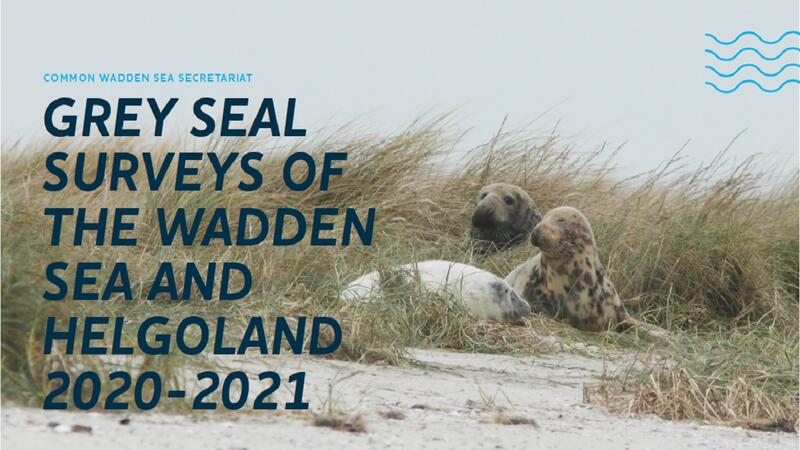2020-2021 Wadden Sea grey seal report: counts show continued growth

The breeding population, determined by the number of pups born, has grown at an average annual rate of 11% over the past five years. In the same period, the numbers counted during the moult also continued to grow, at an average annual rate of 13%. Dr Kristine Meise, of the Common Wadden Sea Secretariat, notes that “regional differences in survey results were observed within the Wadden Sea and will require further attention in the next years”.
Grey seal pups are born during the early winter months. In the latest survey a total of 1927 pups were counted, 201 pups more than last year. The largest increases in pup numbers were observed in Lower Saxony (16%) and Helgoland (12%), while the Wadden Sea of Schleswig-Holstein and Denmark saw only one and three pups, respectively. With 1026 pups (10% increase), the bulk of the pups are still born in the Dutch Wadden Sea (53% of the total), but numbers in this area are still lower than 2018-2019 (1062 pups). The next years will shed some light if the current numbers are indicative of a change in the trend of pup numbers in the Netherlands.
Moult surveys are timed to capture the last stages of the moult, when individual grey seals spend an increased amount of time on land, which in the Wadden Sea takes place in March and April. Overall, an increase of nearly 16% was observed compared to last year, with a total of 9069 moulting grey seals counted in 2021. The largest number of moulting seals was observed in the Dutch Wadden Sea, where 6788 individuals (+19%) were counted. Lower Saxony, Helgoland and Denmark also saw considerable increases in grey seal numbers (+26%, 17%, and 16%, respectively). It is worth noting that during the moult counts, we do not only count seals from the Wadden Sea, but also animals from the larger grey seal population breeding in the UK, which apparently utilise the Wadden Sea sandbanks to rest between feeding trips or maybe to moult as well. Thus, changes in the number of grey seals counted during moult surveys are not a direct reflection of the development of the Wadden Sea breeding population.
Grey seals are the largest predators along the Wadden Sea coast and one of the iconic species of the region. Before the Middle-ages, grey seals were numerous in the Wadden Sea, but they disappeared, probably due to excessive hunting. They recolonised the Wadden Sea in the second half of the 20th century. The Expert Group Marine Mammals (EG MM), which is part of the Trilateral Wadden Sea Cooperation, coordinates the annual counts and harmonises the data from across the region to keep track of the development of the Wadden Sea seal population. The most numerous seal species in the Wadden Sea, the harbour seal, is under special protection under the Agreement on the Conservation of Seals in the Wadden Sea (WSSA), concluded under the UN Convention on the Conservation of Migratory Species of Wild Animals (CMS). Although the WSSA does not officially cover the grey seal, the species benefits from the agreement’s protection measures and monitoring activities which are stated in the current Seal Management Plan (2018-2022). CWSS acts as the secretariat for the WSSA.
The full report can be downloaded here
